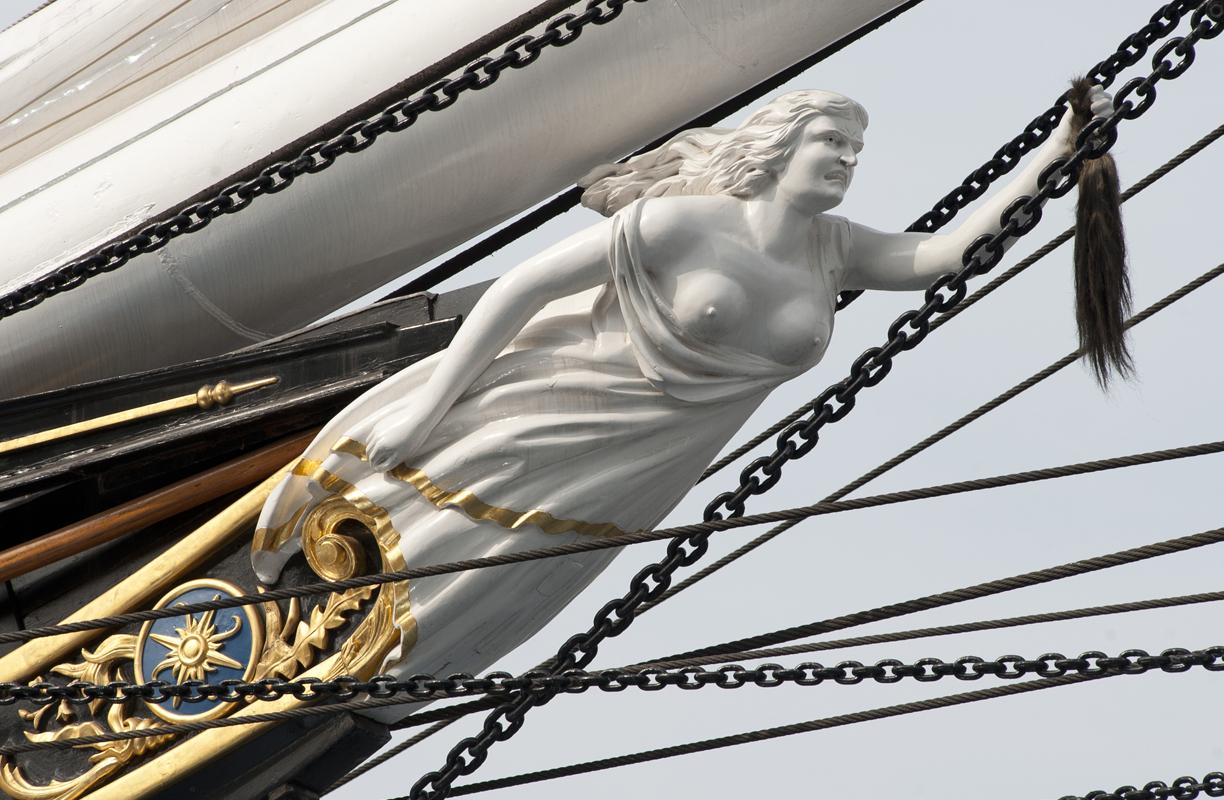
There are many unique and memorable things about clipper ship Cutty Sark. Her name is just one.
Robert Burns's poem Tam O'Shanter, recounts the story of farmer Tam who encounters a coven of witches. A beautiful witch, Nannie, wears a revealing 'cutty sark' or short dress and angrily pursues the spying Tam.
He manages to narrowly escape but not before Nannie has ripped the tail from Tam’s poor horse, Maggie. Nannie, replete with ‘cutty sark’ and Mag’s tail, became the ship's figurehead.

Considered by many to be Burns's finest poem, the story of Tam is thought to have been based on an old folk tale. Capt Francis Grose, author of Antiquities of England and Wales published in 6 volumes 1773-1789, met Robert Burns while conducting research in Scotland. Burns suggested a drawing of the ruins of Alloway church should be included in Grose's new book; Grose agreed on condition Burns provided a witches' tale to go with it. Burns related three stories, one of which gave the essence of Tam O'Shanter's story.
Burns first published the poem in the 1791 edition of the Edinburgh Magazine and it was also included in Grose's posthumously published second volume of The Antiquities of Scotland in 1798.
Tam's story is now well known - indeed Burns's Tam gave his name to the traditional Scottish bonnet he wore, known as a Tam O'Shanter since the early 19th century. Made of wool, originally they were hand knitted in one piece, stretched on a wooden disc to give the distinctive flat shape and then felted. The Tam O'Shanter is then decorated with a woollen ball or ‘toorie’ at the centre.
Capt Richard Woodget, Cutty Sark's master 1885-1895, took to wearing a Tam O'Shanter cap on board. Today, the ship celebrates her proud Scottish and Robert Burns’s heritage by annually hosting a rip-roaring ceilidh for Burns’s night. Join us and toast, as Tam did, ‘Weel done, Cutty-sark!’.